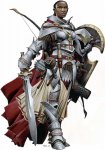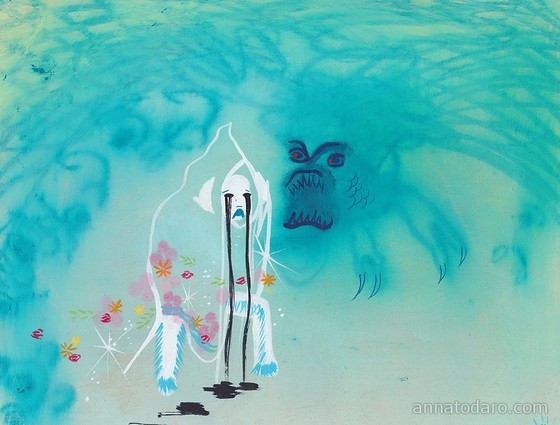I disagree with that framing. I won't go into exactly why in public here, but suffice it to say that consequences are not usually so binary, so any value judgement is often incomplete at best.
My previous posts make it clear that I'm not advocating a binary set of results (indeed, I objected to what I perceived as Obryn's characterization of just that). My saying that morality was a metric of measuring if things were "good" or "bad" was meant to be an overview, not a summation of all possible results. As I noted previously, I think that issues of social consciousness in artwork are supererogatory, and as such deal with things that can be "not bad" while also being "not good."
It's an imprecise prediction, but a company's bottom line often depends on being able to minimize the variation of that prediction. This is what marketing teams and brand teams and analysts and such are for.
It probably wasn't forecasted in much detail when Gygax sketched a bare-breasted "Amazon" in the wood-grain box's booklet (actually, did he do those sketches himself? Hmm...), but I don't think it's ever not been meticulously forecasted under WotC's guideance. What wound up on the cover of the PHB for 4e was no accident, it was specifically chosen to have an specific effect in a specific market.
Even if WotC decided that it wasn't going to choose artwork with those criteria anymore, whatever artwork it did choose, by whatever criteria, would still have certain effects in certain markets. They can't escape the consequences of their actions.
Again, this is a philosophy that I don't personally subscribe to. As noted previously, if we're looking at merit (or lack thereof) the issue of consequences is irrelevant in terms of a deontological point of view. What's most important is the action itself; the effect it has has very little meaning.
I'm not suggesting that WotC isn't focused on the consequences of the choices they make, but the issue at hand here is what they "should" do in regards to the commonly-perceived virtue of inclusiveness. In that regard, you seem to hold that any consequences that promote a general tone of inclusiveness are good, and those that fail to do so are bad (or are you saying that failing to do so is "bad" per se? Because there's a difference between something that is lacking virtue and something that has fault).
That said, there is no need to "escape" the consequences of their actions; those consequences are meaningless, insofar as determining their ethical value is concerned.
That's neither here nor there with regards to WotC's artwork, though.
I disagree. In this case, it allows for one to, I feel, mischaracterize the nature of WotC's artwork by impugning the
results of that art, rather than the for the artwork itself.
I'm just stating that it's impossible to remove oneself from the consequences of one's actions, intentional or no. WotC can't pretend like it its art choice isn't going to have an effect on the world it's in because that's not actually true, and they know it. They are going to have an effect. They know it. They have a responsibility to consider what that effect will be, and they cannot rid themselves of this responsibility.
I disagree that they have such a responsibility, not only because it's at best a guessing game as to what those consequences will be and how much impact they'll have, but because the effect of what they do is immaterial compared to the nature of the actions themselves. There is no need to, nor attempt to, "remove" onesself from the consequences. If you paint a picture that fails to showcase inclusiveness, and that incites someone to rage or depression, that is not something you should feel guilty over, as what you did was not morally reprehensible.





